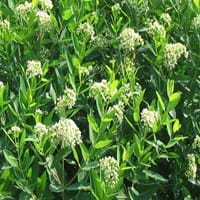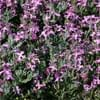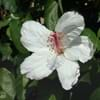Life Span
Annual
Perennial
Type
Flowering Plants, Herbs, Shrubs
Flowering Plants, Fruits, Trees
Origin
Southern Asia, India
Anatolia, Asia, Europe, Iran, Maghreb, Morocco, Norway, The Hiamalayas
Types
Crotalaria benghalensis Lam.
Crotalaria fenestrata Sims
Crotalaria ferestrata Sims
Crotalaria porrecta Wall.
Crotalaria sericea Willd.
Crotalaria tenuifolia Roxb.
Crotalaria viminea Wall.
Flowering Cherries, Sour Cherries, Sand Cherries, Sweet Cherries, Capulin Cherries
Habitat
Mountain tops, Temperate Regions, Terrestrial
Forest edges, Wild, Woods
USDA Hardiness Zone
8-11
4-8
AHS Heat Zone
12 - 4
10-1
Sunset Zone
H1, H2, 3a, 3b, 4, 5, 6, 7, 8, 9, 10, 11, 12, 13, 14, 15, 16, 17, 18, 19, 20, 21, 22, 24
4, 5, 6, 7, 15, 16, 17
Habit
Oval or Rounded
Upright/Erect
Flower Color
Yellow, Gold
White
Flower Color Modifier
Bicolor
Not Available
Leaf Color in Spring
Light Green, Gray Green
Dark Green
Leaf Color in Summer
Light Green, Gray Green
Orange
Leaf Color in Fall
Light Green, Gray Green
Orange
Leaf Color in Winter
Light Green
Orange
Plant Season
Spring, Summer, Fall, Winter
Spring, Summer
Sunlight
Full Sun, Partial Sun
Full Sun, Partial shade
Growth Rate
Very Fast
Medium
Type of Soil
Clay, Loam, Sand
Loamy, Well drained
The pH of Soil
Neutral
Slightly Acidic
Soil Drainage
Well drained
Average
Bloom Time
Indeterminate
Early Spring, Spring
Tolerances
Drought
Heat And Humidity, Not Available
Where to Plant?
Ground, Pot
Ground
How to Plant?
Seedlings
Grafting, Seedlings, Transplanting
Plant Maintenance
Medium
Medium
Watering Requirements
Does not require lot of watering, Requires watering in the growing season
Never Over-water, Over-watering can cause leaf problems or root diseases, Prefer drip-irrigation instead of Over-head watering, Water twice a day in the initial period
In Summer
Lots of watering
Lots of watering
In Spring
Moderate
Moderate
In Winter
Average Water
Average Water
Soil pH
Neutral
Slightly Acidic
Soil Type
Clay, Loam, Sandy
Loamy, Well drained
Soil Drainage Capacity
Well drained
Average
Sun Exposure
Full Sun, Partial Sun
Full Sun, Partial shade
Pruning
Cut or pinch the stems, Remove damaged leaves, Remove deadheads, Shape and thin as needed
Don't prune in the fall, Prune if you want to improve plant shape, Prune in late winter, Remove dead or diseased plant parts, Remove deadheads
Fertilizers
All-Purpose Liquid Fertilizer
All-Purpose Liquid Fertilizer
Pests and Diseases
Insects, Moth, Red blotch
Aphids, Bacterial Canker, Black Knot, Brown Rot, Caterpillars
Plant Tolerance
Drought
Drought
Flower Petal Number
Single
Not Available
Foliage Texture
Fine
Not Available
Foliage Sheen
Matte
Not Available
Attracts
Not Available
Birds
Allergy
no allergic reactions
Swelling in the face
Aesthetic Uses
Not Used For Aesthetic Purpose
Showy Purposes
Beauty Benefits
Not Available
Not Available
Environmental Uses
Air purification
Air purification
Medicinal Uses
Antispasmodic, Cold, Cough, Diarrhea, Digestive disorders, Jaundice, Liver problems, Urinary tract problems, Wounds
Arthritis, Gout, Kidney problems, Rheumatoid arthritis, Swelling
Part of Plant Used
Fruits, Leaves
Flowers, Fruits
Other Uses
Culinary use
Wood is used for making furniture
Used As Indoor Plant
No
No
Used As Outdoor Plant
Yes
Yes
Garden Design
Edging
Not Available
Botanical Name
Apocynum cannabinum
Prunus avium
Common Name
Dogbane, milkweed, honeybloom, bitter root, black
hemp, hemp dogbane, lechuguilla, westernwall
Cherry Tree
In Hindi
भारतीय गांजा
चेरी का पेड़
In German
Indischer Hanf
Kirschbaum
In French
chanvre indien
Cerisier
In Spanish
El cáñamo indio
Cerezo
In Greek
ινδική κάνναβη
κερασιά
In Portuguese
cânhamo indiano
árvore de cereja
In Polish
Konopie indyjskie
wiśniowe drzewo
In Latin
Latin Hemp
Cherry
Phylum
Not Available
Magnoliophyta
Class
Not Available
Magnoliopsida
Clade
Angiosperms, Eudicots, Rosids
Angiosperms, Eudicots, Rosids
Tribe
Crotalarieae
Not Available
Subfamily
Faboideae
Not Available
Number of Species
Not Available
Importance of Indian Hemp and Cherry Tree
Want to have the most appropriate plant for your garden? You might want to know the importance of Indian Hemp and Cherry Tree. Basically, these two plants vary in many aspects. Compare Indian Hemp and Cherry Tree as they differ in many characteristics such as their life, care, benefits, facts, etc. Every gardener must at least have the slightest clue about the plants he wants to plant in his garden. Compare their benefits, which differ in many ways like facts and uses. The medicinal use of Indian Hemp is Antispasmodic, Cold, Cough, Diarrhea, Digestive disorders, Jaundice, Liver problems, Urinary tract problems and Wounds whereas of Cherry Tree is Arthritis, Gout, Kidney problems, Rheumatoid arthritis and Swelling. Indian Hemp has beauty benefits as follows: Not Available while Cherry Tree has beauty benefits as follows: Not Available.
Compare Facts of Indian Hemp vs Cherry Tree
How to choose the best garden plant for your garden depending upon its facts? Here garden plant comparison will help you to solve this query. Compare the facts of Indian Hemp vs Cherry Tree and know which one to choose. As garden plants have benefits and other uses, allergy is also a major drawback of plants for some people. Allergic reactions of Indian Hemp are no allergic reactions whereas of Cherry Tree have Swelling in the face respectively. Having a fruit bearing plant in your garden can be a plus point of your garden. Indian Hemp has no showy fruits and Cherry Tree has showy fruits. Also Indian Hemp is not flowering and Cherry Tree is flowering. You can compare Indian Hemp and Cherry Tree facts and facts of other plants too.





